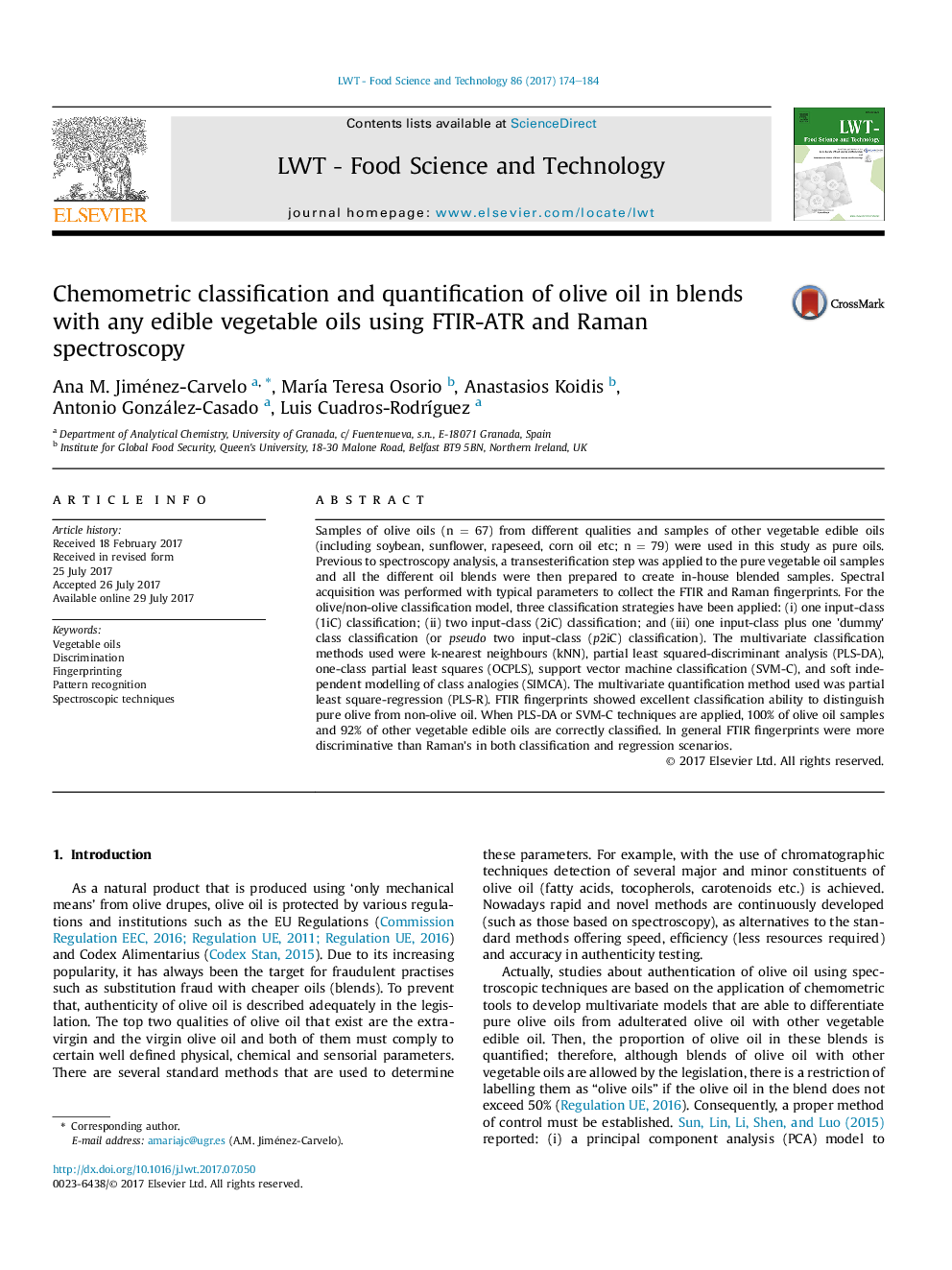| کد مقاله | کد نشریه | سال انتشار | مقاله انگلیسی | نسخه تمام متن |
|---|---|---|---|---|
| 5768674 | 1628513 | 2017 | 11 صفحه PDF | دانلود رایگان |

- Use of the methyl-transesterified fraction to authenticate olive oil.
- Quantification models are built using vibrational spectroscopic techniques.
- Quality metrics provide a high percentage of success (equal or near to 100%).
- One-input, two-input and pseudo two-input class classification strategies were tested.
Samples of olive oils (n = 67) from different qualities and samples of other vegetable edible oils (including soybean, sunflower, rapeseed, corn oil etc; n = 79) were used in this study as pure oils. Previous to spectroscopy analysis, a transesterification step was applied to the pure vegetable oil samples and all the different oil blends were then prepared to create in-house blended samples. Spectral acquisition was performed with typical parameters to collect the FTIR and Raman fingerprints. For the olive/non-olive classification model, three classification strategies have been applied: (i) one input-class (1iC) classification; (ii) two input-class (2iC) classification; and (iii) one input-class plus one 'dummy' class classification (or pseudo two input-class (p2iC) classification). The multivariate classification methods used were k-nearest neighbours (kNN), partial least squared-discriminant analysis (PLS-DA), one-class partial least squares (OCPLS), support vector machine classification (SVM-C), and soft independent modelling of class analogies (SIMCA). The multivariate quantification method used was partial least square-regression (PLS-R). FTIR fingerprints showed excellent classification ability to distinguish pure olive from non-olive oil. When PLS-DA or SVM-C techniques are applied, 100% of olive oil samples and 92% of other vegetable edible oils are correctly classified. In general FTIR fingerprints were more discriminative than Raman's in both classification and regression scenarios.
239
Journal: LWT - Food Science and Technology - Volume 86, December 2017, Pages 174-184